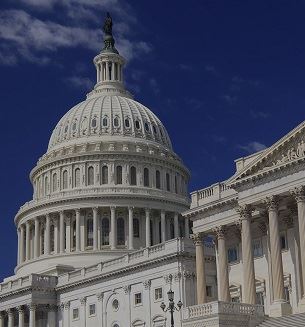Demystifying the Refine of Federal Appeals: What You Required to Know
Browsing the intricate realm of federal allures can often feel like passing through uncharted waters for those not familiar with the procedure. Understanding the nuances of appellate court jurisdiction, the ins and outs of filing a notification of appeal, presenting an engaging quick, and making a persuasive oral debate are important parts that can significantly influence the result of a case. By untangling the layers of complexity surrounding government appeals, individuals can get a more clear understanding right into the devices that control this critical point of the legal system.
Recognizing Federal Appeals Refine
Exploring the detailed world of the federal charms procedure reveals a methodical and structured trip via the judicial system. Federal allures offer as a critical system for assessing choices made by lower courts. Understanding this procedure is vital for anyone involved in lawful proceedings at the government level.
The procedure commonly starts with a celebration disappointed with a reduced court's ruling submitting a notice of allure. This causes a review by a greater court, where a panel of courts assesses the lawful disagreements offered by both events. Briefs describing the lawful thinking behind each celebration's setting are sent, and dental arguments may be heard to clarify complicated concerns.
The appellate court's choice is based on an extensive evaluation of the lower court's process and the arguments provided. The courts do not review realities but concentrate on whether lawful mistakes happened that impacted the reduced court's decision. When the appellate court gets to a choice, it can affirm, turn around, remand, or customize the reduced court's ruling, offering quality and finality to the legal conflict. Recognizing this procedure is essential for browsing the complexities of government appeals properly.
Appellate Court Jurisdiction Discussed
As we progress from understanding the federal allures process to studying the details of appellate court jurisdiction, a basic aspect comes to light pertaining to the authority and limitations of these greater courts in the legal landscape. Appellate court territory describes the scope of situations that a certain appellate court has the power to review and make a decision upon. Unlike trial courts that hear cases for the very first time, appellate courts are limited to reviewing decisions made by lower courts. These decisions can include judgments from both state and government courts.
Appellate courts have jurisdiction over details kinds of instances, commonly those including legal mistakes, procedural concerns, or concerns of law instead than valid conflicts. The jurisdiction of appellate courts is generally described in statutes and laws that govern the court system. Recognizing appellate court jurisdiction is crucial for events entailed in the charms procedure as it figures out whether a situation is eligible for evaluation and the degree to which the appellate court can interfere in the lower court's decision.
Filing a Notice of Allure
The initial action in commencing the federal charms procedure includes filing a Notification of Appeal you can try this out with the ideal appellate court. This crucial document officially informs the court and the various other events included in the case that the appealing event plans to seek a review of the reduced court's decision. Filing a Notice of Charm is a stringent procedural requirement that establishes the appellate process in movement.
When preparing the Notification of Allure, it is important to make sure compliance with the particular rules and standards of the pertinent appellate court. federal crime lawyer. The document needs to generally consist of details such as the situation name, the lower court's name, the date of the judgment being appealed, and a succinct statement indicating the premises for the appeal

Briefing and Oral Argument
In the appellate process, presenting written briefs and involving in dental disagreements play essential roles in supporting for the appealing event's placement prior to the appellate court. Briefs are detailed lawful records that outline the events' arguments, lawful authorities, and evaluation supporting their settings. These written entries supply the court with an in-depth understanding of the facts of the instance, the appropriate law, and why the appealing event believes the reduced court's decision need to be rescinded.
Following the entry and review of the briefs, oral disagreements provide the events a possibility to additional clarify their positions, resolve any type of inquiries the appellate judges might have, and highlight vital points from their written briefs. Dental arguments are a chance for the lawyers to persuade the judges with spoken campaigning for and responses to queries from the bench.
Both the composed briefs and dental arguments are crucial elements of the appellate procedure, permitting events to provide their situation thoroughly and compellingly prior to the appellate court. - federal appeal attorneys
Getting the Appellate Court Choice
The appellate court's decision is generally provided in a composed style and details the court's verdicts on the lawful concerns offered, the thinking behind their choice, and the judgment made. The time frame for getting the appellate court's decision can differ, however courts aim to give prompt resolutions. Whether the appellate court attests, reverses, or remands the lower court's decision, recognizing the implications of the judgment is vital for all parties involved in the appellate procedure.
Verdict
Understanding the appellate court jurisdiction, submitting a notice of allure, preparing briefs, and offering oral debates are all important parts of this procedure. Ultimately, obtaining the appellate court choice can give clarity and resolution to legal conflicts.
As we proceed from comprehending the federal allures procedure to exploring the intricacies of appellate court jurisdiction, a basic element comes to light pertaining to the authority and restrictions of these higher courts in the legal landscape. Appellate court jurisdiction refers to the extent of situations that a specific appellate court has the power to decide and assess upon. Unlike test courts that hear instances for the very first time, appellate courts are restricted to examining choices made by reduced courts. Understanding appellate court jurisdiction is critical for events entailed in the allures process as it identifies whether a case is qualified for review and the degree to which the appellate court can intervene in the lower court's choice.
